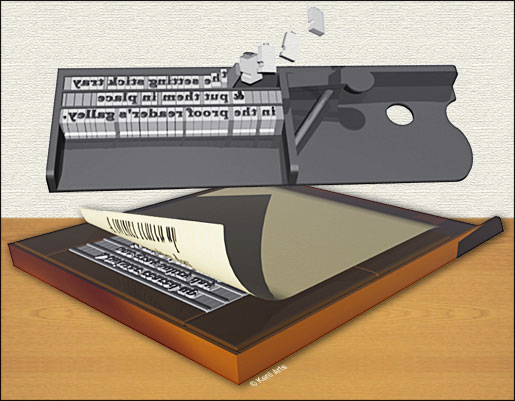History
Book-making and publishing has come a loooong way in my lifetime, a span of over six decades. I recall standing in front of a shallow divided drawer filled with lead pieces. In each slot was a different letter of the alphabet, caps, lower case, numbers and symbols. The letters were placed one-at-a-time, upside-down and backwards in a composing stick, transferred to a galley, inked, proofed and locked-up using quoins, keys and other hardware in the make-ready process. Oh, we mustn’t forget about the film, zinc plates and a host of other steps before anything could be printed.
At other times I would stand behind a letterpress that could crush my hand it I didn’t move quickly. Or, I might sit at a linotype machine that could scald the flesh off me if the molten lead splashed out of its magazine.
Publishing was not only hard physical work, it could also be very dangerous. But, it was the technology of the day. We did whatever was necessary to see our ideas printed and presented in a form that others could enjoy.
Later in my career, I remember having to sit for hours in front of two large computer screens. There, hunkered over my keyboard, I would lay out text and graphics using software so complex that it shipped in a box containing a stack of installation disks and a 400-page manual along with lengthy Terms of Agreement that few ever read. That software cost hundreds, if not thousands of dollars and ran on computers costing thousands more.
Technologies Changing the Book Industry
Thanks to e-readers and tablets coupled with apps that make them come alive, we’re now turning the corner on another major advancement in book-making and publishing. The Apple iPad and the Amazon Kindles/Kindle Fire are the frontrunners in this new, burgeoning industry, but others will certainly challenge them.
Take a look at some of the tools available for creating e-books. If you don’t like getting your hands dirty building your e-book, contact me. I believe I can help.



Leave a Reply